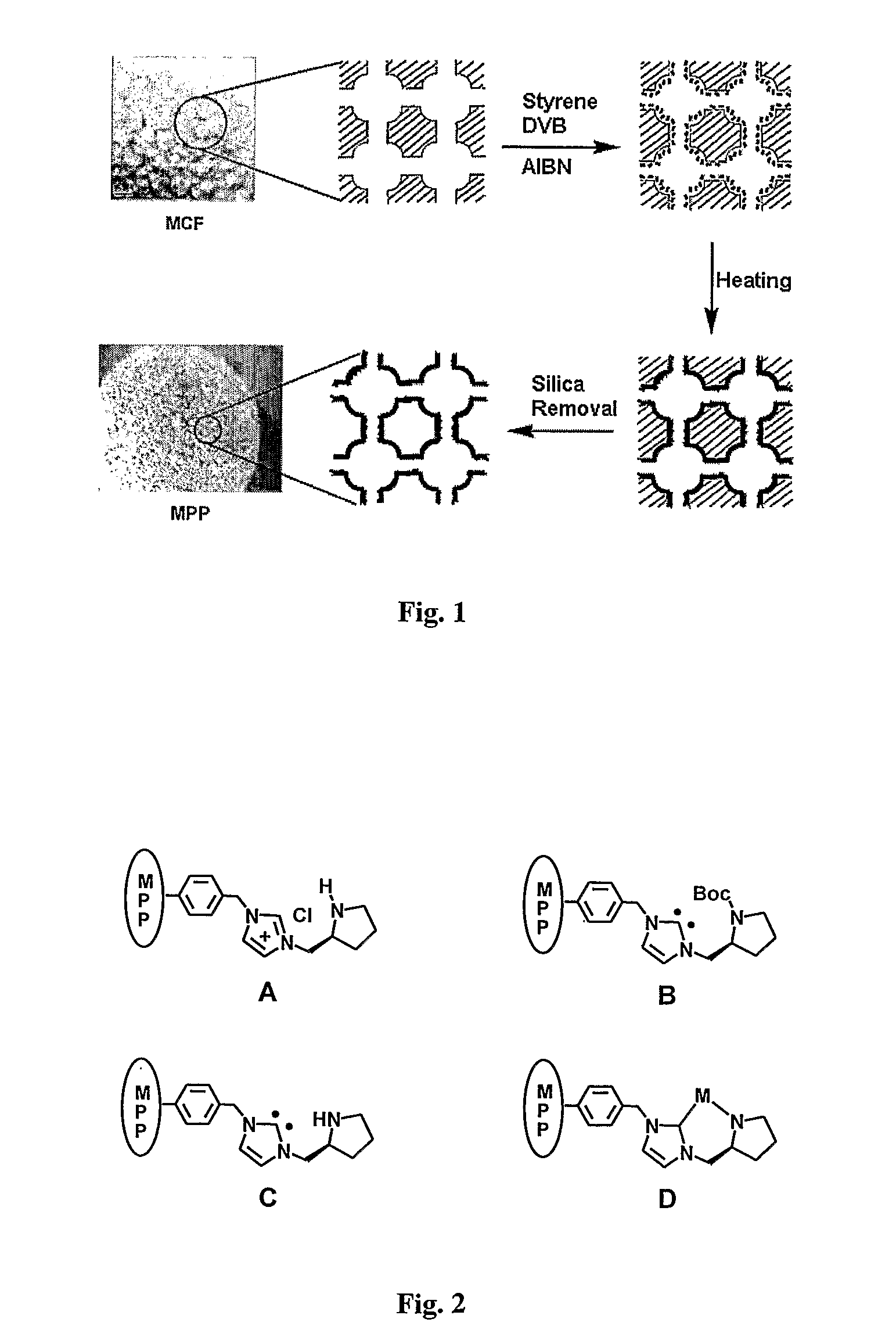Mesoporous Polymer Colloids
- Summary
- Abstract
- Description
- Claims
- Application Information
AI Technical Summary
Benefits of technology
Problems solved by technology
Method used
Image
Examples
examples
[0095]General Information. All solvents were used as obtained from commercial suppliers, unless otherwise noted. Centrifugation was performed on Eppendorf Centrifuge 5810R (4000 rpm, 10 min). 1H NMR spectra were recorded on Brucker AV-400 (400 MHz) instrument. Data for 1H NMR were reported as chemical shift (δ ppm), multiplicity (s=singlet, d=doublet, t=triplet, q=quartet, m=multiplet). PA-FTIR spectra were obtained with a Digilab FTS 7000 Series using a photoacoustic cell (MTEC Model 300). Gas liquid chromatography (GLC) was performed on Agilent 6890N Series gas chromatograph equipped with a split-mode capillary injection system and flame ionization detector, using Bodman Chiraldex γ-TA column (0.25 mm×30 m). C, H, N analyses were obtained with EAI CE-440 Elemental Analyzer. N2 adsorption isotherms were obtained at 77 K using a Micromeritics ASAP 2020M system. Scanning electron microscopy (SEM) images were obtained with a JEOL JSM-7400F electron microscope (10 kV).
[0096]Synthesis o...
PUM
| Property | Measurement | Unit |
|---|---|---|
| Temperature | aaaaa | aaaaa |
| Fraction | aaaaa | aaaaa |
| Fraction | aaaaa | aaaaa |
Abstract
Description
Claims
Application Information
 Login to View More
Login to View More - R&D
- Intellectual Property
- Life Sciences
- Materials
- Tech Scout
- Unparalleled Data Quality
- Higher Quality Content
- 60% Fewer Hallucinations
Browse by: Latest US Patents, China's latest patents, Technical Efficacy Thesaurus, Application Domain, Technology Topic, Popular Technical Reports.
© 2025 PatSnap. All rights reserved.Legal|Privacy policy|Modern Slavery Act Transparency Statement|Sitemap|About US| Contact US: help@patsnap.com



